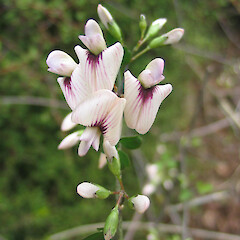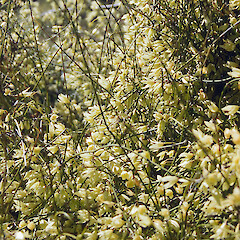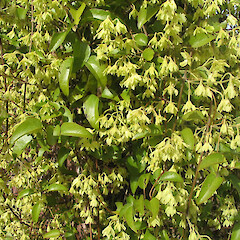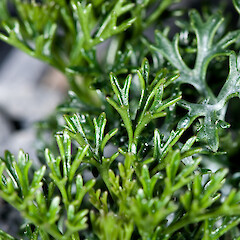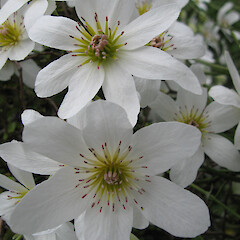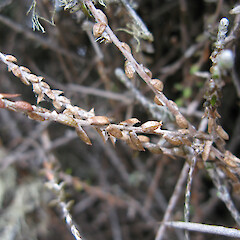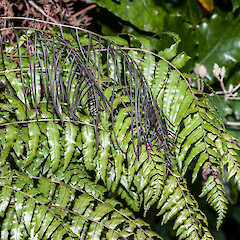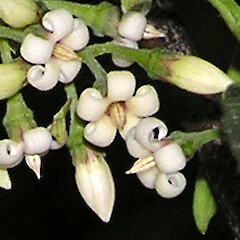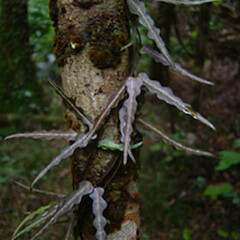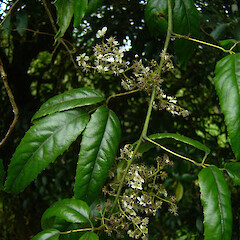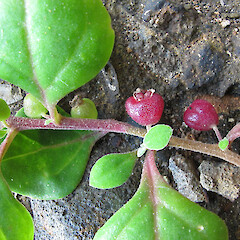The following list of climbers and scrambling plants can be readily grown in New Zealand gardens:
Carmichaelia kirkii
Common name: Climbing broom, Kirk’s broom
Family: Fabaceae
Status: Threatened – Nationally Vulnerable
Clematis afoliata
Common name: leafless clematis
Family: Ranunculaceae
Status: Not Threatened
Clematis foetida
Common name: clematis
Family: Ranunculaceae
Status: Not Threatened
Clematis marmoraria
Common name: North-west Nelson marble clematis
Family: Ranunculaceae
Status: Threatened – Nationally Vulnerable
Clematis paniculata
Common name: white clematis, puawananga
Family: Ranunculaceae
Status: Not Threatened
Helichrysum dimorphum
Common name: everlasting daisy
Family: Asteraceae
Status: Threatened – Nationally Endangered
Icarus filiformis
Common name: thread fern, climbing hard fern
Family: Blechnaceae
Status: Not Threatened
Parsonsia capsularis var. capsularis
Common name: New Zealand jasmine, small flowered jasmine
Family: Apocynaceae
Status: Not Threatened
Parsonsia heterophylla
Common name: New Zealand jasmine
Family: Apocynaceae
Status: Not Threatened
Rubus cissoides
Common name: tātarāmoa, bush lawyer
Family: Rosaceae
Status: Not Threatened
Tetragonia trigyna
Common name: native spinach
Family: Aizoaceae
Status: Not Threatened
To view other groups of garden plants follow these links:

